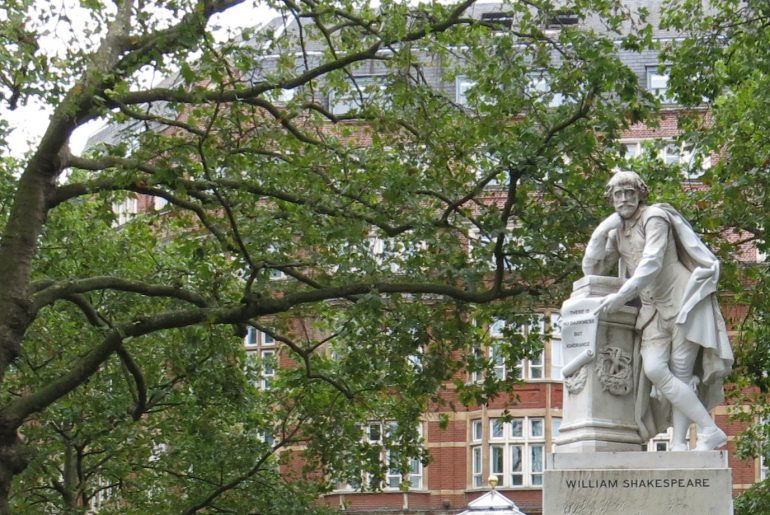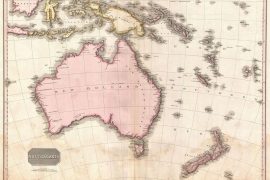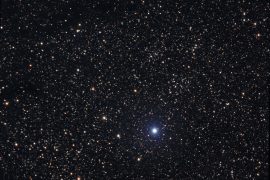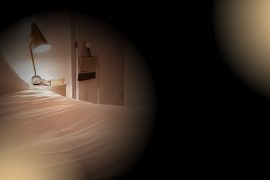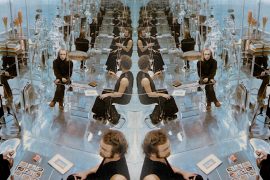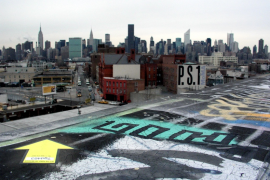I experience our second work of ambient literature, The Cartographer’s Confession by James Attlee, on a busy Saturday afternoon by the Tate Modern on London’s South Bank. Around me, crowds gather around street performers, who are spray painted silver and contorted into impossible-looking positions, a long queue leads a neon pink ice cream van and a group of teenagers perform a choreographed dance routine in front of the river.
Among all this activity, I sit by myself on a bench, put in my headphones, and begin the app downloaded onto my phone. I am soon transported to 1945 and a crackling audio recording recounts the arrival of Thomas and his mother, Ellen, to London on a ship loaded with timber. As I am given fragmented details about the characters, they flicker as though not yet in focus. I am here, sitting on this ordinary bench, but another story is emerging.
I begin to realise that The Cartographer’s Confession is not just the story that its author Attlee has created but it is also the story of the city around me. The street performers, the ice cream van, the dancers and the river Thames are all part of the city but there is another city behind it, just out of sight. The story of Thomas and his mother begins to spreads across London, spanning decades and peeling back the layers of the past.
I am prompted by the app to walk along the South Bank towards Borough Market, past several points that trigger elements of the story told through audio recordings, newspaper clippings and photographs. The route is packed with people, drinking outside pubs and buying food from market stalls, but Attlee’s characters emerge like ghosts from the narrow streets.
As I look at the photographs displayed on the screen of my phone, I get the feeling that I am experiencing several time periods all at once. I am in the present day, looking at photographs taken in the 1940s of the same locations I am passing. I am remembering walking through this market as a student when I lived a few streets away almost twenty years ago and thinking of the terrorist attack that happened here just a few months earlier.
A fictional story has been woven from the materials of this physical location. As Attlee explains in his interview with creative producer Emma Whittaker, the relationship between physical and imagined places were integral to the development of the work.
Prompted by the map on the screen in front of me, I travel to Waterloo Place and walk up and down the stone steps in front of the statue of the Duke of York, waiting for the story to find me again. I wonder whether I look suspicious, holding my phone in front of me and moving it around as if searching for something.
Next, the story takes me to Leicester Square; full of tourists jostling for space while a protest by a vegan activist group gathers outside Burger King and protestors write messages in chalk on the pavement. Crowds queue outside the cinema and people sit on benches in the park, eating their lunch. Two men argue about the morality of eating a hamburger and someone else plays the saxophone. I notice a statue I had never seen before and stop to read the inscription.
Although the story Attlee has created will remain the same, every experience of this work of ambient literature will be unique. Each of its readers will each travel through Leicester Square at a different moment and experience a distinct version of the city. It reminds me of my experience of Duncan Speakman’s work of ambient literature, It Must Have Been Dark By Then, when I realised that the everyday world passing by was, for me, an integral part of the narrative. In The Cartographer’s Confession, this sense of the everyday world close by is joined by echoes of the past.
When I follow the story back to Bermondsey, the cartographer’s confession is revealed to me on the bank of the river. I pause for a few moments as one story fades back into the background and the twenty-first century city takes over again.
— Amy Spencer
Image by Filip Maljković from Pancevo, Serbia (Shakespeare statue) CC BY-SA 2.0, via Wikimedia Commons


